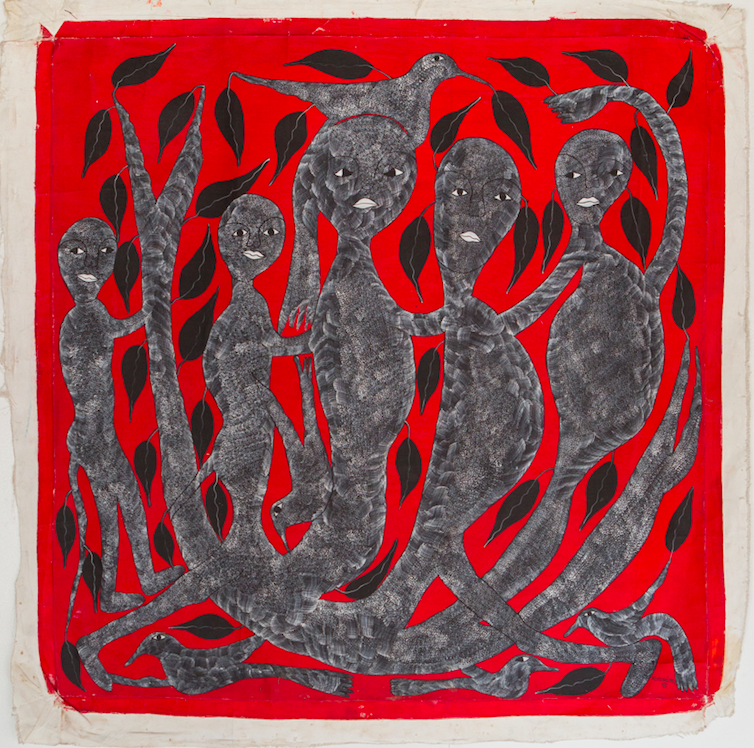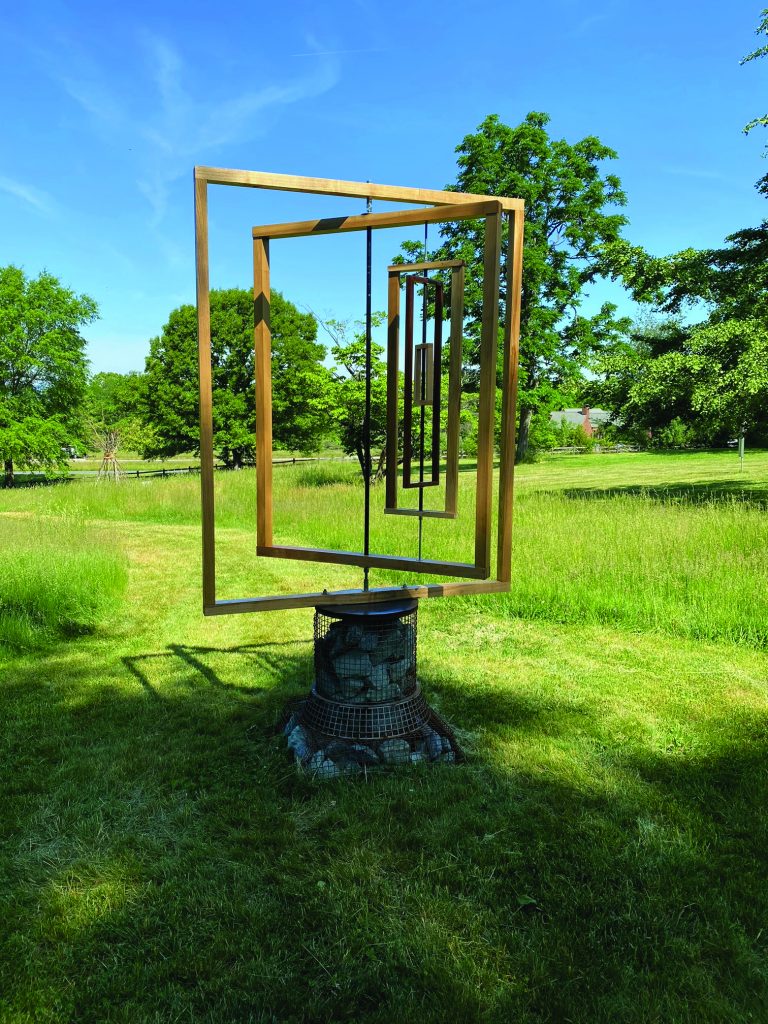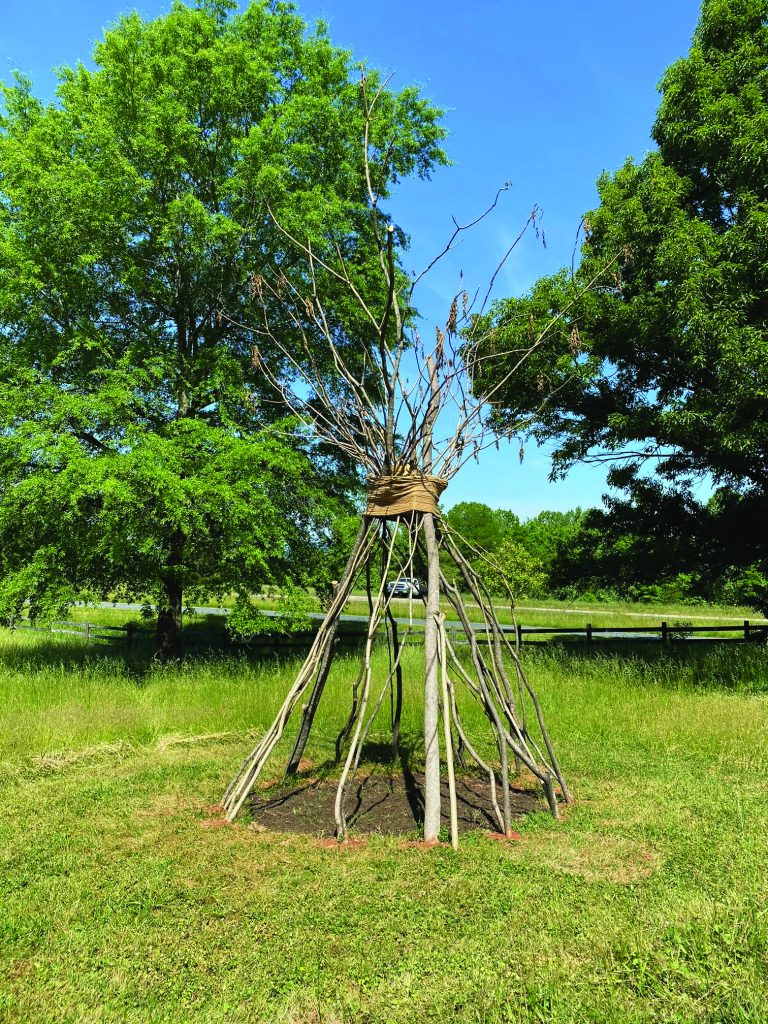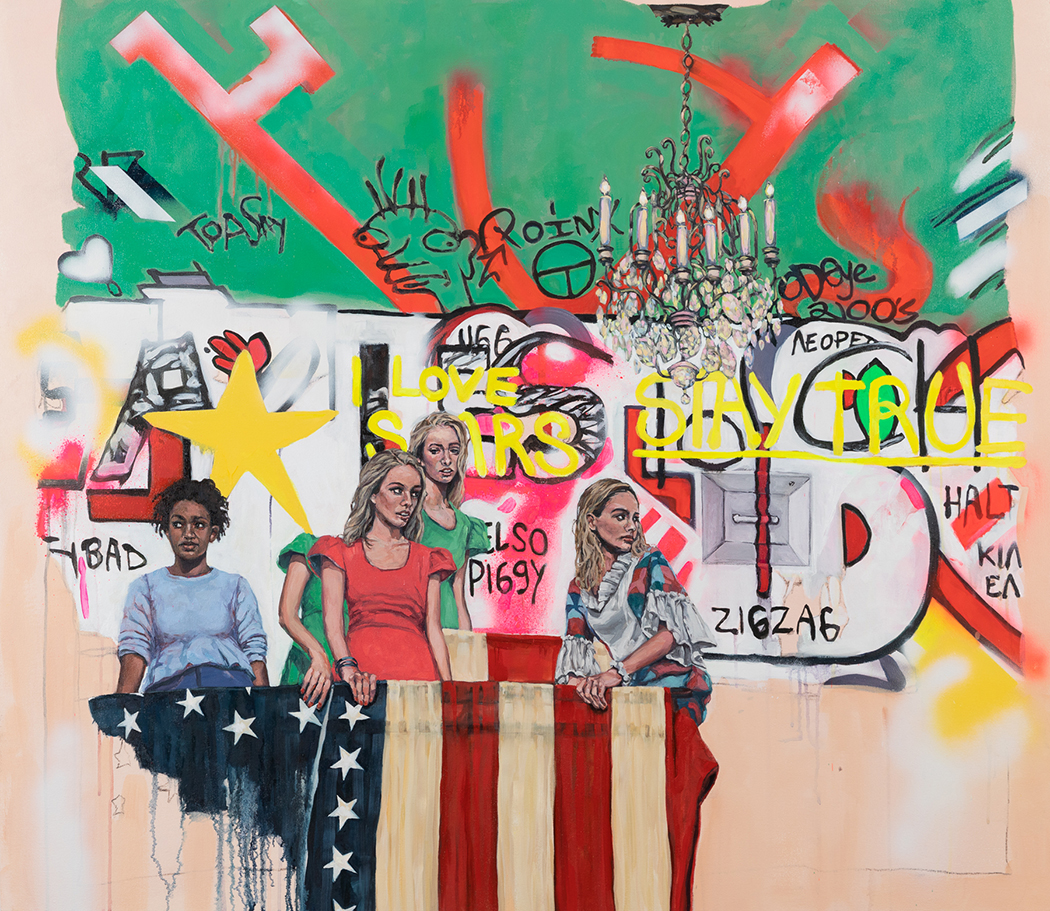Skyscrapers, in our modern imagination, are glitzy glass needles. It wasn’t always that way. The nation’s first towers were ornate and detailed. Intrinsically American, the designs embodied the qualities we like to associate with our national image: We’re can-do, bold, strong, technologically advanced, and audacious.
The Fralin Museum’s new show, “Skyscraper Gothic,” explores the history of these early skyscrapers. The curators, Lisa Reilly from UVA and Kevin Murphy from Vanderbilt, have brought together a wonderfully comprehensive assortment of prints, drawings, photographs, paintings, sculptures, furniture, textiles, toys, models, illustrations and decorative arts to showcase the prevalence of both the Gothic style and the skyscraper motif in contemporaneous culture.
In the early 20th century, Gothic style was seen as enduring, with the authority of time and religion backing it up. The architects most certainly saw a connection between the lofty towers of the office buildings they were designing and the soaring quality of medieval cathedrals. They also must have felt a strong connection to the medieval builders who, like them, were engaged in engineering innovations, building their structures as high as possible, minimizing load on walls with flying buttresses and, in the case of the late Gothic, reducing masonry to the barest minimum to allow for large expanses of stained glass.
At the same time, early skyscrapers were shaped by less idealistic forces, like municipal regulations: One of the signature features of the original skyscrapers is the step-like setback profile. Those setbacks were incorporated to conform to a 1916 New York City zoning ordinance requiring light and air to reach the sidewalks. This distinctive design element was absorbed into skyscraper iconography and widely replicated.
Several works in the show highlight the vital role of the construction workers who put the buildings together. The structures on which they toiled captured the public’s imagination, and so did the workers themselves. The metalworkers’ feats of strength and derring-do—balanced on girders hundreds of feet up—were the stuff of legend, embodying the distinct male energy and bravado of the skyscrapers themselves.
Louis Lozowick’s “Above the City” and Harry Sternberg’s “Riveter” both position their subjects on girders at dizzying heights. In the latter, a red girder juts dramatically out toward the viewer, enhancing the tension and force within the composition. You can feel the effort the figure is expending with his machine. It’s a theatrical image, rendered in highly-keyed yellow, scarlet, and blue. The man’s face is obscured by the riveter, and he is positioned in a monumentalized fashion against the city—an everyman worker and symbol of masculine power.
Charles Turzak’s “The Driller” captures the subject’s strength and determination. Jangled buildings in the background and a cartoonish halo of wobbly lines surrounding the figure convey the teeth-jarring vibration of the drill with droll humor.
The selection of prints, drawings, paintings, and photographs provide just the right backdrop, orienting us in the environment of these early 20th century cities. In several, artists use steam to convey the furious activity of the industry that built and sustained these great metropolises. Examples include Thomas Hart Benton’s “Construction,” Henry Reuterdahl’s “Commerce and Seapower,” Sears Gallagher’s “Manhattan Skyline,” and Samuel L. Margolies’ “Babylon.”
The first modern art movement in America, Precisionism, which celebrated man-made objects and technologies, is well represented in the exhibition as well. You can see the cool hard-edged detachment characteristic of the Precisionist School in Clare Leighton’s “Breadline, New York,” Louis Lozowick’s “Above the City,” Zama Vanessa Helder’s “34th Street Skyline,” Jon Whitcomb’s “Urban Landscape” Howard Norton Cook’s “Chrysler Building,” and Leo Rabkin’s “Untitled (Spirit of Progress, Skyscrapers and liners).”
With their velvety blacks and subtle light effects, Samuel Gottscho’s “Radiator Tower (at Night)” and Russ Marshall’s “Penobscot Noir” are gorgeous, lush photographic images that evoke a moody, brooding city. Don Walker’s “Downtown Detroit Enveloped in Fog” uses atmosphere conditions for dramatic effect, too.
Other photographs provide more visual information about the buildings and their settings. Samuel Kravitt’s “Aerial View of the Empire State Building” and Ilse Bing’s “View of Lower Manhattan” give us a sense of what New York looked like and the scale of the skyscrapers in relation to their surroundings.
The everyday objects on display reveal how skyscrapers functioned as icons. The buildings’ influence seeped into nearly every corner of American culture. Among the treasures on display are a flapper’s beaded purse with skyscraper motif, a number of children’s toys, from board games to building blocks, and a dazzling chrome weight and height scale and maple bookshelf that both ape the skyscraper form.
A great deal of thought has been put into the exhibition design. Handsome banners of the Chrysler Building, the Empire State Building, and the Woolworth Building hang above the stairs in the foyer to greet visitors. The banners work with the steel gray color used on the walls to set the tone for the rooms. The pedestal for “Chrysler Building Souvenir Building” is cut to resemble the building’s shape, and vintage postcards of famous skyscrapers are positioned on an outline of the United States, helping visitors visualize where the buildings are located. Even the elevator doors and interior are sheathed in an intricate Art Deco motif, which also makes an appearance on one gallery wall. All this produces an ambience that replicates, with great élan, the cool elegance of the iconic structures themselves.












